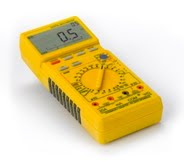I don’t get this question too often but frequently enough where I thought it would be good to give my view on the subject. The question is how should I orient my part in the build? The answer, of course, is that it all depends on what you are trying to achieve. Like all additive processes, 3D printers build one layer at a time. No matter how thin that layer is there is usually some evidence of that line left in the part as it is removed from the printer. Secondary processes can often eliminate the visible effect of layers but with most technologies there is a slight reduction in strength along the Z axis. Visually, on vertical walls this might look like tiny horizontal lines. On curved surfaces it might look like steps along the curvature or arc. With .004” layers the cosmetic effect is very slight. Larger layer thicknesses are more apparent. Thinking about your specific part and armed with this knowledge you can select an orientation in the build area that will minimize the impact to cosmetics and strength. Another consideration is build time. If you want to print something with the shape of a pencil or a ruler you might want to lay it down so that the least number of layers are required for printing. If you were to stand an eight inch long pencil up on end such that the eraser is printed first and the tip last, 2000 layers would have to be printed to complete the build. Laying it down along the X axis would require only 60 layers if the pencil is .24 inches in diameter. Even though the printed area is much larger per layer in this orientation the printing speed makes up for the time it takes to prepare each next layer.


One reason A ZPrinter® is fast is because it prints up to a half inch stripe at a time. This means that in almost any orientation you can print your parts fast. But if you understand part orientation you can maximize the speed and the quality of your build. In general the fast axis, or the direction the carriage moves in, is the fastest. The slow axis, or the direction the entire gantry moves in, is a bit slower. And, the Z axis is the slowest. In addition, the fast axis does not have to travel the full length of the gantry. So if you move your part to the edge of the build where the fast axis starts printing your part will print even faster. In other words, if the printer you are using has 10 inches of travel in the fast axis but your part is only 2 inches long, the carriage will only move as far as it has to in order to print the part. If you position the part in the center of the build area the carriage will have to travel 7 inches to start the fist stripe. For some parts the difference in print speed might not be noticeable but for a 2000 layer build the added time per layer accumulates and could be significant.
The main point is that by knowing how your printer works you can optimize your results and be more successful using your printer. A slight adjustment to your part orientation in the build area can result in significant improvements.
http://www.zcorp.com/









This is my very first time that I am visiting here and I’m truly pleasurable to see everything at one place.http://www.3dprintinggeeks.com/
ReplyDeleteThanks...
ReplyDelete3d printed products
Thanks......
ReplyDelete3d prototyping
This CD printing method utilises a printer that employs the same process as an inkjet printer that many home users will be familiar with. In fact, many home printers can be equipped with a CD printing tray for use with pre-manufactured CDRs with a printable surface. free 3d models download
ReplyDelete